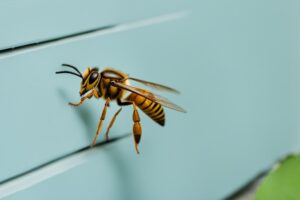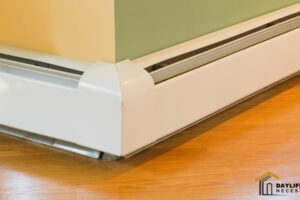Are you looking to give your garage a clean and polished look by finishing the bottom of the drywall?
You’ve come to the right place! Finishing drywall is a crucial step in any home improvement project, and doing it right can make all the difference.
In this guide, we’ll walk you through the process step by step, from preparing the surface to applying the final coat of paint. Let’s get started!
Contents
Tools and Materials Needed
Before diving into the project, gather the essential tools and materials. You’ll need joint compound, drywall tape, a putty knife, sandpaper, and a utility knife.
These tools ensure a seamless and professional finish.
Preparing the Surface
Before applying joint compound, ensure the garage floor is clean and free from any dust or debris.
A clean surface is essential for the joint compound to adhere properly and create a long-lasting finish.
Applying the Joint Compound
Start by applying the joint compound to the bottom of the drywall seam.
Use the putty knife to spread a thin layer of compound over the seam, ensuring it’s smooth and even.
Taping the Seams
Next, apply the drywall tape over the joint compound to create a strong bond between the drywall panels.
The tape also prevents cracks from forming, ensuring a durable finish.
Feathering Technique
To achieve a seamless look, employ the feathering technique. Gradually spread the joint compound beyond the seam, feathering it into the surrounding drywall.
This technique helps blend the compound seamlessly with the rest of the surface.
Sanding the Surface
Once the joint compound dries, sand the surface using fine-grit sandpaper.
Sanding removes imperfections and creates a smooth texture, preparing the surface for the next coat.
Applying a Second Coat
Depending on the desired finish, a second coat of joint compound may be necessary.
Apply it using the same techniques as the first coat, ensuring an even application.
Sanding the Second Coat
After the second coat dries, sand it again to achieve a flawless finish. Be cautious not to over-sand, as it may damage the drywall and ruin the smooth surface.
Priming the Surface
Before painting, prime the finished surface to ensure proper paint adhesion and enhance the final color’s vibrancy.
Choose a suitable primer based on the type of drywall.
Painting the Finished Surface
Now comes the exciting part – painting! Select the right paint for garage drywall and use suitable painting techniques to achieve a professional look.
Clean-up Tips
Remember to clean up the workspace and tools after finishing the project.
Proper clean-up prolongs the life of your tools and maintains a tidy work environment.
Common Mistakes to Avoid
Avoid common mistakes like rushing the process or neglecting the feathering technique.
Take your time and pay attention to the details for an outstanding finish.
DIY vs. Hiring a Professional
Decide whether to tackle this project yourself or hire a professional. Assess your skill level and budget to make the best choice for your needs.
Safety Precautions
Always prioritize safety while working on any home improvement project. Wear protective gear and work in a well-ventilated area, especially when dealing with joint compound and sanding.
Read More:
- 10 Best Wood Sealer For Trailer Deck in 2023: The Ultimate Guide to Wood Sealants
- 12 Best Fertilizer For Japanese Maple: A Comprehensive Buying Guide – 2023
- Top 9 Best Oil For Baseball Glove in 2023: The Ultimate Buyer’s Guide to Glove Oils
- How to Rough In a Double Sink Vanity
Conclusion
With these step-by-step instructions and essential tips, you’re well-equipped to finish the bottom of drywall in your garage like a pro.
Take your time, follow the techniques, and achieve a smooth, flawless finish that will transform your garage.
Enjoy the satisfaction of a job well done and the enhanced look of your space!
FAQs (Frequently Asked Questions)
How long does it take for the joint compound to dry?
The drying time of joint compound can vary based on humidity and thickness but typically takes 24 to 48 hours to dry completely.
Can I use regular sandpaper for sanding the drywall?
It’s best to use sandpaper specifically designed for drywall to avoid damaging the surface and achieve optimal results.
Is it necessary to use primer before painting the drywall?
Yes,




